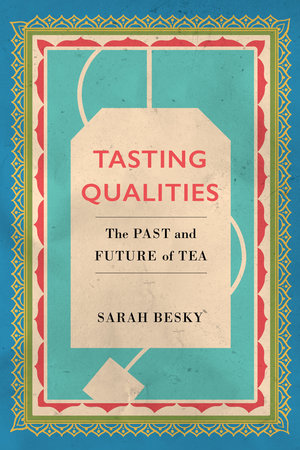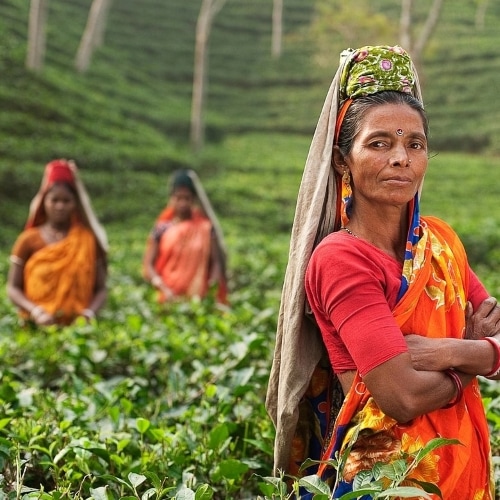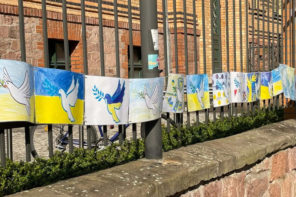How does one reproduce the taste, smell and appearance of any craft based/ industrially produced food commodity? Tea is one of the many beverages with roots in colonialism. In the recent decade anthropological scholarship on tea has mainly revolved around the plantation economy, the ecology of tea production and consumption, and the gendered nature of plantation work. Pia Chatterjee’s (2001) monumental work A Time for Tea: Women, Labor, and Post/Colonial Politics on an Indian Plantation traced the political economy and ecology of gendered representation of cultures around tea. Supurna Banerjee (2017) in her work Activism and Agency in India: Nurturing Resistance in the Tea Plantations makes a methodological shift in understanding tea plantations as social spaces, rather than economic units of production and thereby exploring the question of agency in the resistance that wrecked the tea plantations from 2000-2010. Both these works are significant to understand the post coloniality of the tea plantation economy. Despite closure of tea gardens in Darjeeling, labour struggles, reported cases of starvation deaths in tea gardens in the Himalayan foothills, the popularity of tea in India has not subsided. Tea continues to be brewed and mixed with flavouring agents to be consumed across the globe irrespective of whether or not tea leaves are locally sourced. Like coffee, tea is cultivated in select geographies, but it is brewed and consumed as a hot and cold beverage across the World.
What do people reach out for when they reach out for a cup of tea/ coffee or a plate of food? Despite unequal relations along the commodity chain of most plantation based food commodities such as tea, coffee and sugar, what goes into making a cup of nice tea? Sarah Besky’s recently published work Tasting Qualities. The Past and Future of Tea is a timely addition to the literature that explores how the plantation economy thrives on an unequal relationship between the labourers, plantation managers, plantation owners, traders and finally how this commodity chain translates into the making of a ‘quality’ tea.

This book is a timely addition to the literature that explores how the plantation economy thrives on an unequal relationship between the labourers, plantation managers, plantation owners, traders and finally how this commodity chain translates into the making of a ‘quality’ tea.
Besky’s work provides a welcome departure from the existing scholarship on the anthropology of capitalism which consists in ‘following a thing’. Such an approach has allowed anthropologists to understand the shifts of meanings in the life of a thing. For example, Paige West (2012) demonstrates that coffee beans originating from Papua New Guinea might find a new meaning in the hands of the ‘male’ traders in Hamburg whose work consists in creating ‘commensurable coffees’. The act of distinguishing ‘coffee from the pool of commensurable coffees’ is not so simple. The traders must have the knowledge to ‘interchange’ coffee from ‘other origins’ in case coffee from Papua New Guinea is in short supply, West observes (ibid : 204).
Sarah Besky, on the other hand, does not privilege any actor, or a certain time frame as the beginning or endpoint of quality. Instead she shows the temporal nature of quality as she takes us through colonial experiments to brew the perfect cup of tea, to tea tasting (Chapter 1), auction houses (Chapter 2) run and managed mostly by men belonging to the Indian middle class. Besky observes post plantation labour spaces were mostly controlled and managed by Indian middle-class men – be it the act of testing the tea, or the management of the auction. The entry of women as tea tasters and in the management of auction is of recent origins. In other words, ‘whose bodies can count as properly qualified to evaluate tea is a highly gendered one’( pp16). If tea tasting is an act of discerning quality through sensory properties around tea leaves, the discussion on Chapter 2 revolves around the ‘tea auction catalogue’, – a ‘communicative infrastructure’ through which words, numbers and narratives find meaning in producing ‘quality’ tea. Both Chapter 1 (on the taste of tea), and Chapter 2 (on auction) allow us a glimpse into the ways in which human bodies encounter tea leaves, and how tea leaves become things to be numbered in the auction catalogue – a fixed capital that becomes the reference point for communication between plantation fields to tasting rooms to buyers across geographies.
Black tea is a ‘blend’ of different origins and tastes of tea, and it has nothing to do with origin. Creating a blend often involves mixing twenty or thirty varieties of tea. Such procedures are called invoices. Starting from small to large companies they depend on a host of actors to buy their invoices so that a cup of Tetley across geographies irrespective of ‘quality’ of water would taste the same. However the history of blending (as discussed in Chapter 3) is a murky tale of a failed attempt to trademark ‘Empire tea’. While the tea industry struggled with the concerns around tannin, and its associated health hazards there was a noticeable shift in the semantics of ‘quality’ tea. The answer was the biology of the tea plant, plantation tea and a celebration of indentured labour in the colonies. The image of plucking of two leaves and a bud in the hands of Nepali, Adivasi, or Tamil Women depending on the geography came to represent ‘quality’ tea. This chapter documents the history of the science behind the production of quality of tea and the struggles to establish ‘plantation tea’ as ‘quality’ tea compared to the varied nature of tea production sites in China. To understand how and why ‘plantation tea’ became famous, Besky does not only establish the plantation as an important infrastructure for the plucking and sourcing of tea but also demonstrates how the plantation functioned as an ‘experimental system.’
The image of plucking of two leaves and a bud in the hands of Nepali, Adivasi, or Tamil Women depending on the geography came to represent ‘quality’ tea.
The term ‘experimental system’ was conceptualised by Hans-Jörg Rheinberger, a historian of science who conceived science as a process and experimentations as ‘generators of knowledge’. Besky, in the introduction cautions us that the term experimental is to be read as an analytical framework. “I use “experimental” as an analytical term, then, but I also use it because, at various points in tea’s history, people inside India’s tea industry have explicitly described their work with tea as experimental” (2020 : 15)
‘Quality’ tea is a process of experimental systems at loggerheads with each other. In Chapter 4 – the Science of Quality – Besky gives us an insight into how the chemistry of tea had to be integrated within plantation production. The Tocklai Tea Research Institute established in 1911, in Jorhat, Assam is a key actor in the discursive framing of ‘quality’ as ‘a science’. I want to draw attention to one of the many experiments developed within Tocklai laboratory which opens the question of how ‘the science of quality’ tea had to be merged with ‘economic’ interests of ‘quality’ tea controlled by brokers, traders and others. By the mid-1950s Tocklai laboratory had developed experimental varieties of tea with theaavin and thearubigin values. They were unsure if they could rely on the opinions of brokers because a broker would rely on how blenders and dealers would receive the tea. To ascertain the value, Tocklai laboratory hired their own in-house tasters who were encouraged to visit brokers in Kolkata.
The production of ‘quality’ tea was inherently experimental, built on ‘experimental systems’ of colonial empire, postcolonial science, plantation labour hierarchy and most importantly a certain colonial baggage of monoculture that is evident even in today’s plantation arrangements.
Despite its important theaavin and thearubigin values, the tea could not fetch a price because of its appearance. Another sample received a better pricing because of its golden tip. Tocklai laboratory was an important part of the colonial apparatus and its journey to scientific sovereignty provides an important backdrop to understand the postcolonial science of ‘quality’ tea. The production of ‘quality’ tea was inherently experimental, built on ‘experimental systems’ of colonial empire, postcolonial science, plantation labour hierarchy and most importantly a certain colonial baggage of monoculture that is evident even in today’s plantation arrangements. Industry insiders believed that ‘quality’ tea could only come from plantations with histories of monoculture. With the closure of plantations, small growers following the Bought-Leaf Tea Factory model (where the processing tea leaves come from gardens not owned by the factory) in Dooars, have started to emerge. One of Besky’s respondents, a journalist reporting on the closure of tea gardens, feels that small growers who supply to Bought Leaf Tea Factories are working with young vibrant bushes and therefore he insists, ‘the quality is really good’. This last remark illustrates how quality tea is shaped by the experimental systems of several ‘doers’ such as tasters, brokers, plantation owners, plantation labourers, chemists, biologist etc. A study on ‘quality’ is built into the ecology of ‘experimental systems’.
References
De Assis, Paulo. 2018 “Experimental Systems and Artistic Research.” In Logic of Experimentation, 107-22. Leuven: Leuven University Press, 2018. Accessed September 11, 2020. doi:10.2307/j.ctv6zdcpg.7.
Banerjee, Supurna. 2017. Activism and Agency in India: Nurturing Resistance in the Tea Plantations. Edinburgh : Routledge.
Chatterjee, Piya. 2001. A Time for Tea: Women, Labor, and Post/Colonial Politics on an Indian Plantation. Durham, NC: Duke University Press.
Murphy, Michelle. 2013. “Chemical Infrastructures of the St Clair River.” In Toxicants, Health, and Regulation since 1945, ed. Soraya Boudia and Nathalie Jas, 103-15. London: Pickering & Chatto.
Rheinberger, Hans- Jörg. 1994. ‘Experimental Systems, Historiality, Narration, and Deconstruction” Science in Context 7(1): 65-81
West, Paige. 2012. From Modern Production to Imagined Primitive. The Social World of Coffee from Papua New Guinea. NC: Duke University Press.
Read Tanya Matthan’s review here.
Read Sabine Parrish’s review here.
Featured image by Free-Photos (courtesy of Pixabay)










1 Comment